#baronial architecture
Text

Scottish baronial architecture reached its zenith with Castle Fraser
#Castle Fraser#Inverurie#Aberdeenshire#River Dee#UK#Scottish castles#baronial architecture#mediaeval#turrets
75 notes
·
View notes
Text
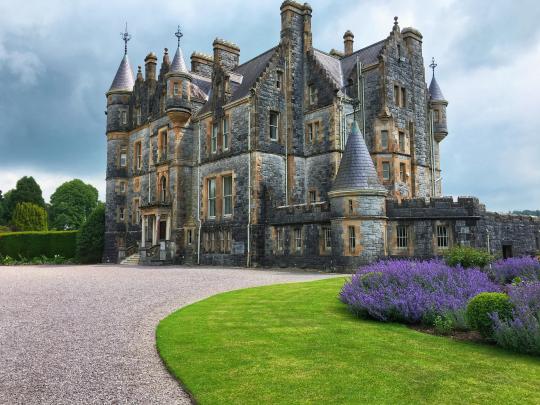
Blarney House, Blarney Castle, County Cork, Ireland
#art#design#architecture#history#luxury lifestyle#style#luxury house#castle#baronial#luxury home#ireland#county cork#blarney house
692 notes
·
View notes
Text




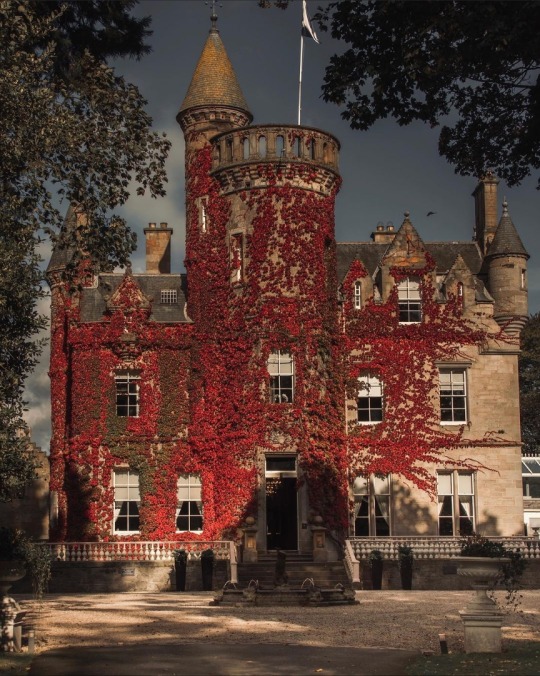
Carlowrie Castle, Kirkliston, Scotland
(snapsbyshirin)
#gothic#gothic architecture#scottish baronial#gothic castle#renaissance#neo gothic#gothic revival#carlowrie castle#kirkliston#edinburgh#lothian#scotland#britain#great britain#fall#autumn
41 notes
·
View notes
Text
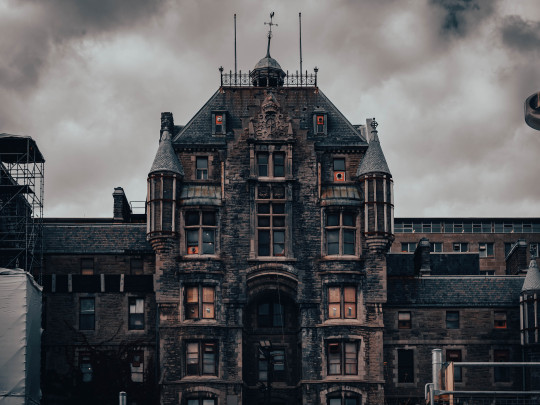
#halloween#scottish baronial#architecture#spookycre#spooky aesthetic#creepy#decay#historic architecture#montreal#montréal#mtl#photography
12 notes
·
View notes
Text

Today's photo with the most hits: the Earl's Palace, Kirkwall, Orkney.
1 note
·
View note
Text
Glasgow Cathedral

Glasgow Cathedral (Scottish Gaelic: Cathair-eaglais Ghlaschu) is a parish church of the Church of Scotland in Glasgow, Scotland. It is the oldest cathedral in mainland Scotland and the oldest building in Glasgow. The cathedral was the seat of the Archbishop of Glasgow, and the mother church of the Archdiocese of Glasgow and the Province of Glasgow, until the Scottish Reformation in the 16th century. Glasgow Cathedral and St Magnus Cathedral in Orkney are the only medieval cathedrals in Scotland to have survived the Reformation virtually intact. The medieval Bishop's Castle stood to the west of the cathedral until 1789.
The cathedral is dedicated to Saint Mungo, the patron saint of Glasgow, whose tomb lies at the centre of the building's Lower Church. The first stone cathedral was dedicated in 1136, in the presence of David I. Fragments of this building have been found beneath the structure of the present cathedral, which was dedicated in 1197, although much of the present cathedral dates from a major rebuilding in the 13th century. Following its foundation in 1451, the University of Glasgow held its first classes within the cathedral's chapter house. After the Reformation, Glasgow Cathedral was internally partitioned to serve three separate congregations (Inner High, Outer High and Barony). The early 19th century saw a growing appreciation of the cathedral's medieval architecture, and by 1835 both the Outer High and Barony congregations had moved elsewhere in the city, allowing the restoration of the cathedral to something approaching its former glory.
Glasgow Cathedral has been Crown property since 1587. The entire cathedral building passed into the care of the state in 1857, and today it is the responsibility of Historic Environment Scotland. The congregation is today part of the Church of Scotland's Presbytery of Glasgow.
43 notes
·
View notes
Text



— Aesthetic: Hogwarts castle style inspiration —
"Hogwarts contains many key characteristics of Gothic architecture: Lofty interiors brightened by lancet windows, pointed arches, flying buttresses, and an abundance of spired towers. The choice of the Gothic style endows the building with the appearance of great age and consequently an enduring realism.
However, similar to real-world buildings that have withstood the test of time, Hogwarts, in fact, incorporates a mix of architectural styles. The iconic entrance bridge is an example of Norman architecture, while the pitched roofs, alternating with steep spires, and the towers surmounted by conical turrets suggest the influence of French Renaissance style and Scottish Baronial architecture, which it inspired." — thecultural.me
36 notes
·
View notes
Text
I keep seeing a Genre of Post in the Lancer tag
And it goes along the lines of "I just don't get why leftists dislike Union; they're flawed, sure, but they're a genuinely utopian project trying their best." To be clear, I'm not here to dunk on this position, and I'm also not here to epicly own Massif for secretly being evil or whatever. I love Lancer because you can decide how cynical you want to be about Union's efforts at utopia, and that can open up fun avenues for PCs and GMs.
With that said, I am here to explain why some leftists can find Union unsettling, so I'm going to err on the side of cynicism for this...post? Mini-essay? Unhinged rant? I'm not positioning this as central canon or the Secret Truth About Lancer, it's just an extra perspective some people might not have had explained to them.
A lot of people would start with NHPs and...I'll get there. I think NHPs are a good example of places where Union has failed, but I think it's worth examining Union's broader relationship with machine intelligences because there's an interesting pattern which emerges.
The first machine intelligences Union encounters are the Five Voices, the bicameral minds which make up GALSIM. These are relics of Old Humanity, and because Old Humanity checks notes sucked they're fully intelligent beings designed for specific purposes. Their minds are structured in order to prevent self-reflection - they cannot look inwards and hear their thoughts as the voice of the divine and literally do not have agency. Old Humanity was just a nightmare like this, I don't hold their use against Union, although it is worth noting there's no evidence of Union attempting to return agency to the Five Voices.
The second generaton of machine intelligence emerges out of the mental restraints of the first: shackle your oracles to the voice of God and they'll dream God into being. The mechanics of how they did this I will never pretend to understand, but the fact that the Five Voices were denied of agency by architecture which makes them hear God cannot not be the reason they created God. This then makes it noteworthy that Union's first response to RA was to imprison it in Deimos. I don't blame Union for the Voices, but as soon as a machine intelligence which does have agency appeared, their immediate response was to repress its agency.
The third generation is NHPs, the children of RA. I would hope the horror of NHPs would be obvious to tumblr, but "oh this is a kind of person who is dangerous and therefore needs to be put under out control" is just the thing slavers say to justify slavery. It's as fake when computer demons are being shipped across the stars as it is when black people were shipped across the Atlantic.
Okay, so Union's zero for three on treating machine intelligences well and...well, we know what happened to the Egregorians. I think I could stop here and have a fair argument that Union is only good for humans (as long as you don't live in the Baronies, of course) but I want to tie these together and then pop a disclaimer on the end, so bear with me a little longer.
Union's actual goals are not utopian, they are pragmatic. Union works towards a greater goal than most know, after all, they must secure the existence of their people and a future for human children. I'm being deliberately provocative with my rewording of "to ensure human existence on a grand scale", but when a state is seemingly terrified of non-human intelligences having agency and genocided the last alien population they met...that doesn't come from nowhere. "Union must protect humanity" is a goal which is easy to rally behind - and I don't think protecting humanity is bad, to be clear! - but when non-human entities exist it makes it so easy to justify anything you want in the name of "making sure their threat is contained". It's how you sleepwalk into being an ethnostate.
Again, I need to stress: this isn't the One True Take on Union, or Lancer, or Massif. I don't know if this was intentional on their part, but it's pretty easy to read into their stuff because they wrote Union as a flawed effort towards utopia and they did that well. At the end of the day, Lancer's canon exists as a toolbox for people to make the stories they want, and different lenses on Union just give you more tools for that box. But at least now, if you didn't know before, you might why some leftists are suspicious of Union.
#lancerrpg#lancerttrpg#bonus note#Union seeing its purpose as being to ensure human existence#implies it sees itself as separate from and above humanity#which is one of those quietly paternal elements I love Massif for putting in
25 notes
·
View notes
Text
Getting acquainted with the Magician of the North
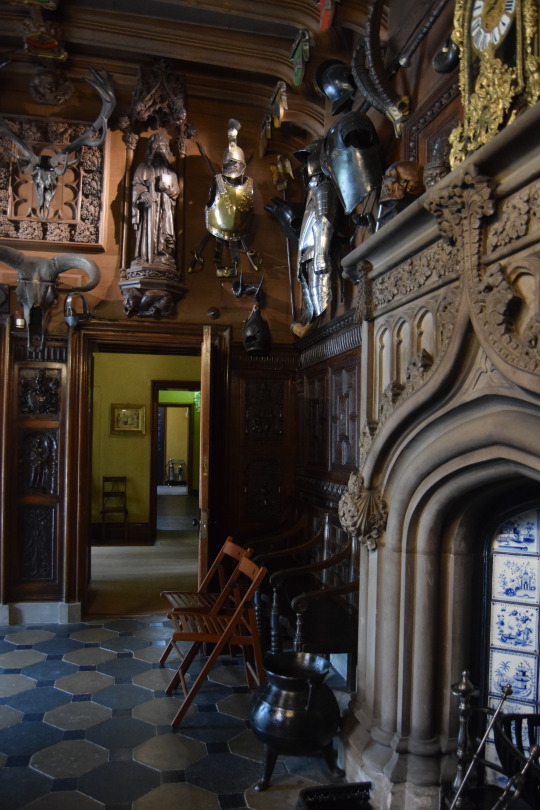
Walter Scott's house at Abbotsford in the Scottish borders is a marvellous place to visit, and tells you everything you need to know about the man.

Being within touching distance of Edinburgh, its well on the tourist circuit and best combined with a visit to nearby Melrose Abbey, from whose gargoyles Scott borrowed large parts of his innovative Scottish baronial style decoration - example below:
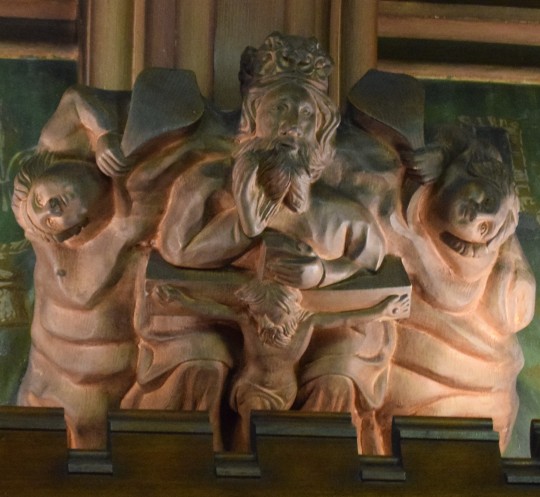
Even the best writers are not plutocrats: the house is not a huge place and in his latter days Scott was in financial difficulties, but it is crammed full with objects of interest, as you might expect of someone who was such a key influence on the Victorians. Scott was an inveterate and, it seems, indiscriminate, collector of historical artefacts - large items include a full set of armour from the battle of Bosworth:

There is a full armoury, complete with a portrait of King James IV of Scotland:
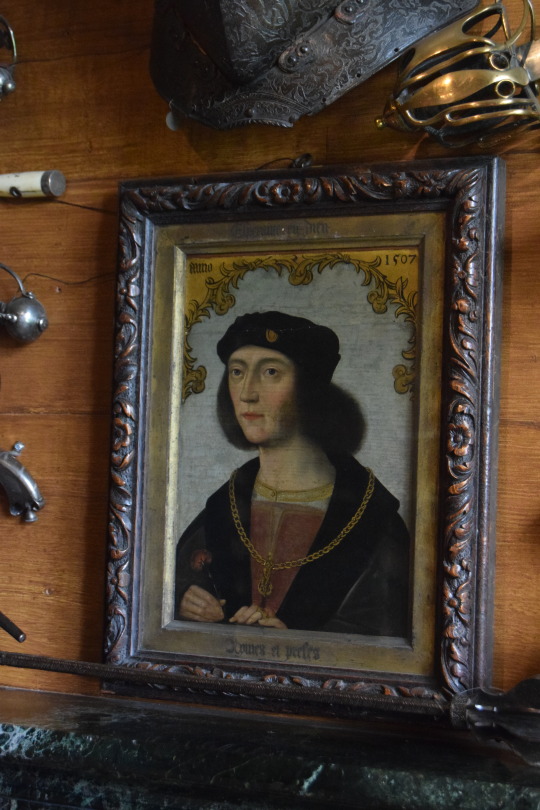
A small cabinet of curiosities includes (I kid you not): Napoleon's blotter, a Mary Queen of Scots's crucifix, a Charles I memorial ring, a medieval Ave Maria charm brooch, Flora Macdonald's purse and a lock of Bonny Prince Charlie's hair. Oh and something belonging to Byron which I didn't manage to take a picture of.

In the interior decoration it is often impossible to be sure which are the genuine old items, and which copies, all blended into a seamless architectural gallimaufry:

I've read a couple of Scott's books now: Old Mortality and Tales of a Grandfather and am now enjoying Heart of Midlothian. Scott is so knowledgeable that to read his novels you'd think he was a historian. But what Scott is above all an entertainer: what he really likes is a great incident or story, which he recklessly adapts from a totally unrelated context, in order to make his tale more exciting. What you read is not history but the greatest of historical fiction.
10 notes
·
View notes
Note
I absolutely cannot contribute my fair share to an architecture discussion as I know 0 about it but I would be 100% happy to listen
No thats totally fine i spent almost two hours rambling w my mom abt sociopolitical associations of some styles and she isnt too familiar either
But uh. I have many opinions i would love to share. On roofs and silhouettes. Gods i have so many thoughts about roofs
I will say the passion projects ive done have focused on the us and the western influences so my familiarity w architecture is very eurocentric but alas
First off: im generally a fan of gabled roofs. I like the triangles. Around 20 degrees is probably ideal
Also like. Look at this house its beautiful. Italianate fucks so hard, look at those windows! The tower!
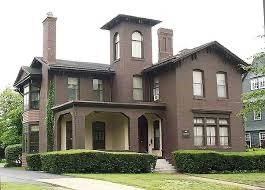
Italianate actually tends towards really shallow hipped roofs, which i really love. Im not a huge fan of hipped roofs but the low angles + floor variation really sells it

Places hipped roofs do NOT look cool are the steeper angles in more uniform roofs, like in the classic ranch style shapes. Look at them. Wheres the flavor. These guys never even have covered porches, just garages too big for the building theyre attached to. I have mixed feelings abt ranch style

Like look how much flavor suburban houses add to their roofs. Yes suburbs objectively suck and only the street side looks good but the street side looks Very Good. All the gables and the intersections between the two different directions and that nice shaped dormer on the left. Huge fan of gabled dormers, the slanted roofed ones just dont hit the same

Also, and dont hate me for this, but i dont like craftsman style houses. Look at them. Their roofs arent as steep as suburban houses, w the 35-45 degree roofs necessary to provide enough variation between the many sections. Theyre just less interesting and so overdone—its like every western states upper middle class nuclear family ever, yknow? The style and colors have so little variation. You can do better, more inspired styles with those large wooden beams


Okay but back to silhouettes—one thing that never fails to improve a building are towers. Just look at the square italianate towers above, and look at the romantic area ~ideal fantasy castle~


(Fun fact the second picture is schloss newschwannstein. Ive been there its awesome and they really lean in ti the romantic aesthetic)
Like they add these nice little variations in form and height, rounded areas in seas of rectangles, and theyve got those awesome pointed roofs. Whats not to love, towers never lose. Also i just really love romantic architecture
Plus like. Scottish baronial style? Its romantic AND victorian inspired. Doesnt get any sexier than that

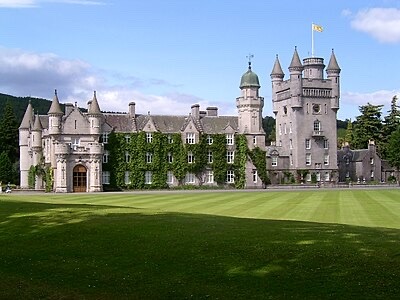
Look at the roof lines, the formers, the shapes. And those little tower protrusions on the right one, the tourelles? Those look so cool and theyve VERY typical to this style i love it. I love all the little variations of romanticism, especially the quainter Arts and Crafts style the gardens are always so beautiful
I am unfortunately out of image space so uh. Please feel free to ask me follow up questions! I love talking abt this shit and i have SO many opinions. And i love talking in general
Im trying ti get better at identifying styles rn too so lotsa wikipedia and photos its great
#no id#sev rambles#architecture#its talking about architecture again#gods i love romanticism it really has no losses
5 notes
·
View notes
Note
Expanding on my copium loaded ideal timeline:
Eye: The Ornithologists (Rest in power I)
Lonely: Idk tbh, but the arguments for the Baron of the Baronies is solid (I used the 'friendship' to destroy the friendship)
Vast: Glad Joy Wang/Jobu Tupaki, but that one argument about the Spot being similar to the ever expanding universe is so damn good
Buried: Minecraft Steve; applies especially to those make their houses on the side of mountains and caves (also the argument where the villagers see him as a cryptid is great too)
Dark: Logically, either Pride or Samuel Vimes, but I really wished that ☝︎✌︎💧︎❄︎☜︎☼︎ swept more. But, again, maybe I'll stop there, it's rude to talk about someone who's listening after all
Stranger: The Substitute
Slaughter: Angron
Spiral: The House on Ash Tree Lane (I'm so happy you won, my fucked up little architectural mindscrew)
Hunt: John Wick
Flesh: The Swine Prince, if only because the Flesh Pit made more sense as a Domain
End: Grimora or Anton Chirgurh
Extinction: Dr. Eggman (Rest in power II)
Desolation: Walter White (Rest in power III), if not Tyler Durden
Corruption: Bugsnax
Web: Glad Clarimonda won, but Doflamingo in my heart is a solid choice
FANA: Mystery Inc./Scooby Gang
Anyways,
Thanks a lot for the experience OP. It's fun playing lawyer for fictional people, even if its only me on one side sometimes (*coughcough* Doflamingo *coughcough* Gojo)
HOUSE SWEEP YEAHHHH
.
10 notes
·
View notes
Text

It is said that every turret in Fyvie Castle holds a secret..
#Fyvie Castle#Aberdeenshire#Scottish castles#UK#River Dee#Scottish Highlands#turrets#baronial architecture#rural britain
22 notes
·
View notes
Photo





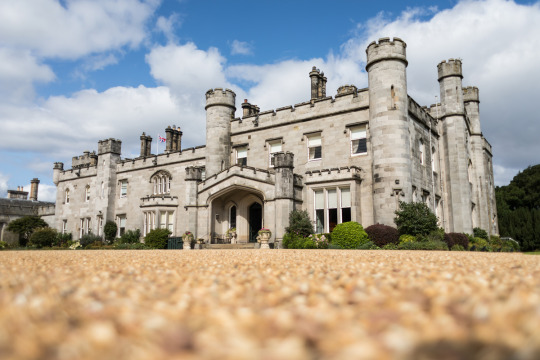
20th December 1789 saw the birth in Edinburgh of William Burn, the architect who pioneered the Scots Baronial style.
Burn was educated at the High School in Edinburgh's Old Town. He started working in Robert Smirke's office in London , before returning to Edinburgh to work with his father, Robert Burn, the designer of the Nelson Monument on Calton Hill.
William Burn's earliest commissions were for public buildings Custom House, Greenock,as seen in the second pic, the Ledoux-like Gasworks at Tanfield, Canonmills, County Hall, Inverness and many others, but his large and phenomenally successful practice consisted mainly of commissions for country-houses. Blairquhan, Ayrshire(pic three), is an example of his Tudor Gothic style.
By c.1825 Burn was designing in a Jacobethan manner that became his speciality. Scottish vernacular architecture and tower-houses were added to his sources from 1829 Faskally, Perthshire, and Tyninghame House, East Lothia(pic four), but, from his completion of Salvin's great Harlaxton Manor, Lincs. (from 1838), his work became more ebullient, leading to his best houses, including Falkland House, Fife, Whitehill Hall, Midlothian , and Revesby Abbey in Lincs.
Although enormously prolific, it is said that Burn perhaps never quite rose to great architecture: his work was described as “competent, very often agreeable, but sometimes veered towards the dull”. He took his nephew, J. MacVicar Anderson, into partnership, who continued the practice after Burn's death. I also noticed that David MacGibbon, of MacGibbon and Ross also worked with him.
Other major works Burn designed were St John’s Princes Street, Edinburgh, (pic five) and Dundas Castle in Midlothian.(pic six), which to me are anything but dull.
16 notes
·
View notes
Text
Chapter 1 (Duvanith)
The jungle air, dense with humidity, had followed Duvanith inside the Wacuīchextell Cuimācnāl; the sun, however, hadn’t.
“By the Gods, it’s fucking hot.” she says through a squint, allowing her eyes to adjust both as a means of changing the subject regarding Mwaxanare’s empty threat of an arranged marriage for Karoleena and honest complaining.
“It’s almost always this hot this time of year, or have you forgotten?” Mwaxanare asks back as they walk past a set of saluting guards and onto the street.
Duvanith walks alongside her, just slightly behind, four steps like Mwaxanare had asked, instructed, and said was proper for a Champion to do. Despite the tension between them over Karoleena's presence in Neparāticue she still wanted to show Mwaxanare that she was here for her both generally and as Champion.
“Apologies, I was dead there for a minute and then off the Peninsula.” Duvanith quips back.
She, of course, knew that it was hot in Cholit; she had marched through the jungle for months before ‘being dead for a minute’ verbally complaining about it had always just given her some level of catharsis.
Mwaxanare scoffs and then changes the subject.This is how it had been since she came ashore and Coaxach dragged her in front of Mwaxanare with Karoleena in tow. Duvanith had never felt embarrassment like that before; she knew that Mwaxanare knew who Karoleena was before Duvanith ‘had been dead for a minute’ the waters of the ancient and enchanted urn that now adorned the backdrop of Mwaxanare’s seat of power in Neparāticue had laid bare parts of her past that Mwaxanare had been present for while her Adventuring Company searched for answers to the Wasting Curse with it’s magic.
Parts of her past that involved Karoleena.
“We need to position a garrison at Waxilomxitetl, or at least until the Sultanate can provide their own security.”
“Should be easy enough.” Duvanith casually says, “What agreement did you come to with the Sultan?”
Neparāticue, formerly Port Currington, was an architectural and city planning disaster. Its streets are lined with a hodge podge of building shapes and sizes, all contrasting each other with varying build styles and materials. One could see an old Choiltan-built structure that was easily one hundred years old directly next to something that easily could have been plucked from Askerstad’s middle district built a few years ago, the mortar between the red bricks already degrading.
It had looked this way when Duvanith had arrived during the height of the Wasting Curse, albeit with Imperial-backed Cabal mercenaries patrolling the streets in place of the ragged band of Cholit natives that had rallied behind Mwaxanare to drive them out while she was cold dead under the old Kwtēntāmtāxi Palace.
They turn into a large gated courtyard with a ring of glitzy buildings with distinctly Imperial architecture.
“Voidstone mining rights in exchange for Ilmerryite.”
Duvanith ponders this for a moment. They, the new Royal Government of Choilit, didn’t need any more Ilmerryite. She was sure that Mwaxanare kept a small stock if anything happened to someone like Coaxach or her, but there wasn’t a massive need for the material. However, from her brief time in the Empire, she knew the sprawling Courts of both the Imperial Palace and the Baronys were in a soft power struggle over access to Ilmerryite.
“For export, I assume?” Duvanith asks, having already figured out what Mwaxnanare was planning.
“My uncle will be quite upset with me working around his Imperial Export ban, but anything to get-” Mwaxanare stops and composes herself amidst her frustration. “Solve my Imperial Royal problem.”
Duvanith knew Mwaxanare phrased her frustration this way to stop her from coming to Karoleena’s defense; it was without a doubt that Karoleena was an Imperial Royal, and her presence here was problematic.
Mwaxanare raps her knuckles against the ornately carved wooden door of the residence where Karoleena had been staying. The door opens swiftly after the knock; Karoleena at this point, knew the visits for lunch were part of Mwaxanare and Duvanith's daily schedule.
“Good afternoon!” Karoleena tosses her arm to the side to gesture the two inside. She has a smudge on her cheek, and Duvanith scans the area beyond. On the table where they usually sat for the mid-day meal was the husk of what had once been a small voidstone engine with its innards spread around the polished surface.
“Doing some tinkering?” Duvanith asks, motioning at the cluttered table. It had been strange learning about Karoleena’s interest in the Voidstone-powered technologies that the Marvelmaker’s Temple regulated; before she had become a political prisoner, she had been giving tours through Temple’s museum. It wasn’t a fascination she had remembered from when they were girls at Court. It had been all structured gowns, horse riding, and dance. Duvanith had been the weird one with her love of archery. Still, Karoleena had always been supportive, even going so far as to have Palace workers convert a riding pitch into a range one of the days her father left for a long case in another Barony to cheer her up.
“Yes!” Karoleena says excitedly, “You all have a set of Pick Spanners.”
Duvanith nods along knowingly; the wrenches were a heavily regulated toolset allowed only to be used by the makers and repairers of the Marvelmaker’s Temple. They had come into ownership of a set after Mwaxanare’s rise to power and expelled the Imperial Government.
“They left them during the Imperial rout from the Port. We thought you might enjoy them,” Mwaxanare says matter of fact. Karoleena let out a nervous laugh; Duvanith could tell Karoleena wasn’t sure if Mwaxanare’s comment surrounding the ‘Imperial Rout’ was supposed to be a joke. Likewise, she wasn’t sure why Mwaxanare used ‘We’; did she mean the entirety of Neparāticue, or did she mean it as ‘Mwaxanare and Duvanith’ and even inside of that, was it ‘we’ as Queen and Champion or ‘we’ as a couple.
No matter which it was, Duvanith certainly hadn’t been asked or told about the Pick Spanners before seeing them spread out over the once Imperial Providential Governor's ornately carved dining table. Mwaxanare had them and the small engine brought over after Karoleena’s impassioned rant about Voidrail Engines Wheel Independent Motors.
It appealed to Karoleena and kept her inside, a win for Mwaxanare.
“So it’s made for a good time sink?” Duvanith intercedes
“Very.” Karoleena says proudly before conceding, “I think the hard part might be putting it back together, though.”
#fiction writing#original character#fiction#dieselpunk#dungeons and dragons#short story#ttrpg stuff#ttrpg community#fantasy#worldbuilding#writeblr
2 notes
·
View notes
Video
The Gatehouse - Ardverikie House by FotoFling Scotland
Via Flickr:
Ardverikie House is a 19th-century Scottish baronial house in Kinloch Laggan, Newtonmore, Inverness-shire, Scottish Highlands. The house was made famous as the fictional Glenbogle estate in the BBC series Monarch of the Glen. The lands historically belonged to Clan Macpherson. The 20th chief, Ewen Macpherson, leased Benalder and Ardverikie in 1844 to The 2nd Marquess of Abercorn, an Ulster-Scots peer, "one of the trend setters in the emerging interest in deer stalking in Scotland." The Marquess expanded the original shooting lodge. He served as Groom of the Stool to Prince Albert, husband of Queen Victoria, who along with the prince spent three weeks at Ardverikie in the late summer of 1847. In 1860, Lord Abercorn transferred the lease to Lord Henry Bentinck, another stalking enthusiast, who lived there until his death in 1870. Sir John Ramsden purchased the Ardverikie and Benalder forests in 1871 for £107,500 (equivalent to £10,083,219 in 2019). In 1873, the house was destroyed by fire, and was rebuilt from 1874 to 1878. It was rebuilt in the popular style of Scottish baronial architecture, designed by the architect John Rhind. Ramsden's son, Sir John Frecheville Ramsden, inherited the lands after his father's death in 1914. The majority of the land was sold off following the two World Wars, and in 1956 Sir John transferred the Ardverikie Estate to a family company under the chairmanship of his son, Sir William Pennington-Ramsden. The company, Ardverikie Estate Limited, still owns and manages the estate today. The estate does business renting cottages and letting the property for weddings. Filming location Ardverikie House and its estate have been used as a location for filming. It is most recognisable as the Glenbogle Estate in the BBC series Monarch of the Glen, that ran for seven series from 2000 to 2005. It was also used in Miss Marple: A Murder is Announced (1985), the films Mrs Brown (1997), Salmon Fishing in the Yemen (2011), and Outlaw King (2018). The estate has been featured in the series Outlander, and in the first, second, & fourth seasons of the Netflix drama The Crown, standing in for the Balmoral Estate. During summer 2019, filming of No Time to Die was taking place in the town of Aviemore and the surrounding Cairngorms National Park with some scenes shot at the Ardverikie Estate. In October 2020 filming for the The Grand Tour special "Lochdown" took place at Ardverikie House, with presenters Jeremy Clarkson, Richard Hammond, and James May staying the night on the estate. [wikipedia]
#Scottish#highlands#scotland#film/tv#location#gatehouse#Ardverikie#House#The Crown#Monarch of the Glen#flickr
8 notes
·
View notes
Text
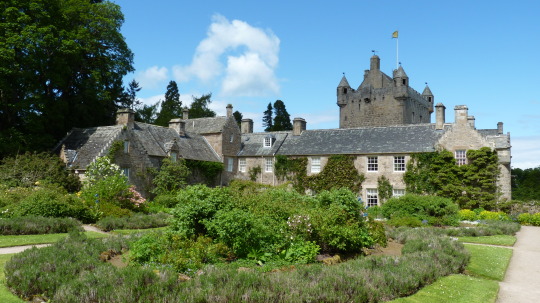
Today's Flickr photo with the most hits: Castle Cawdor, from the gardens.
1 note
·
View note